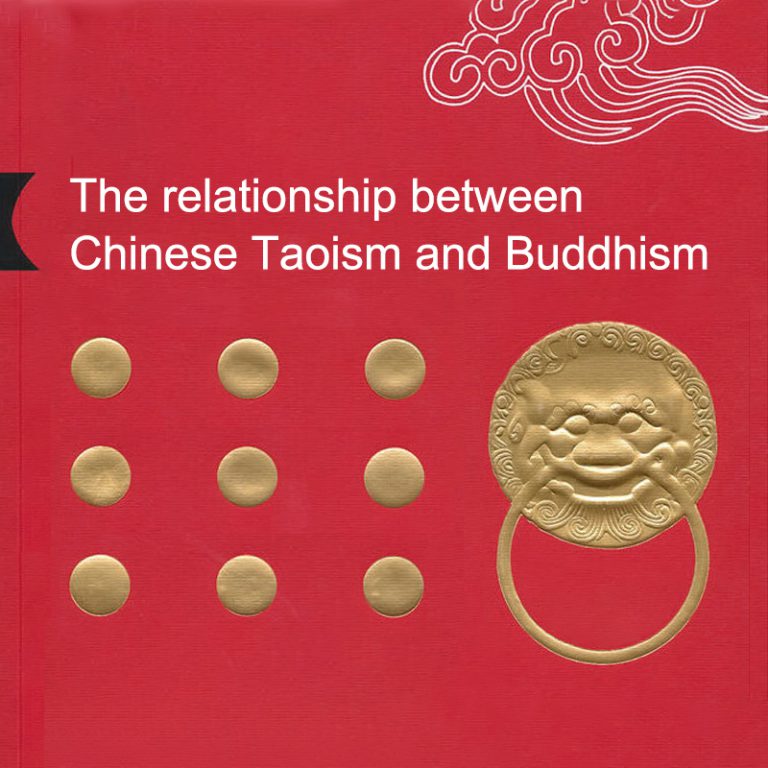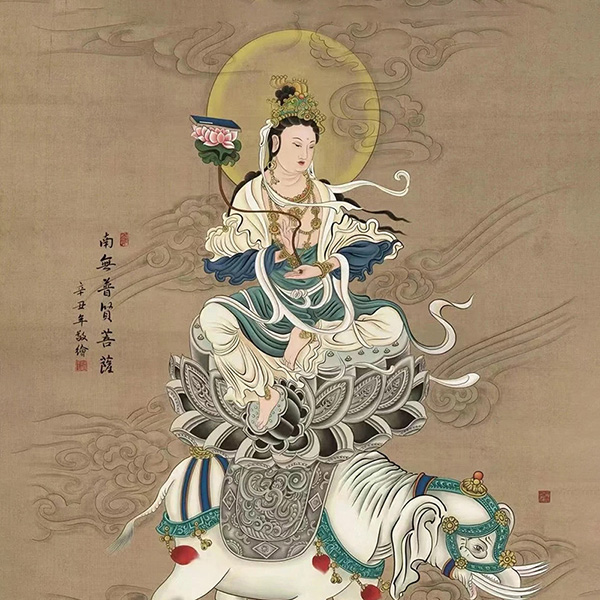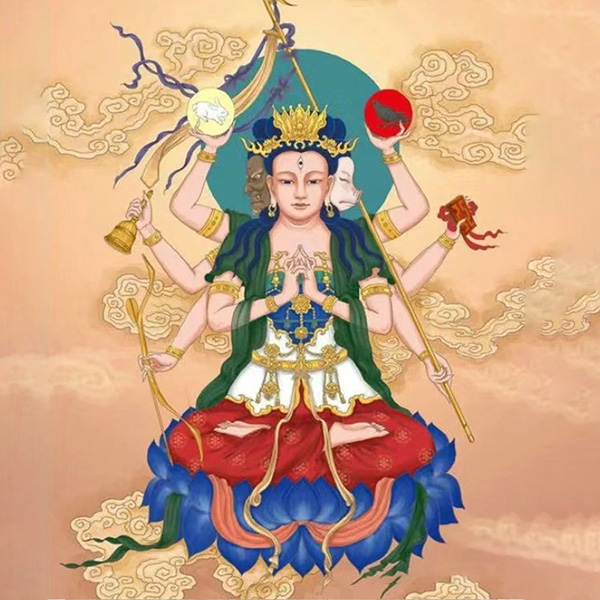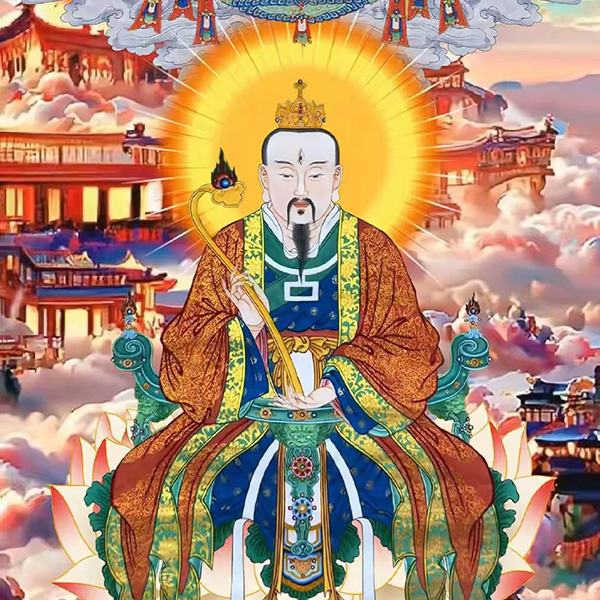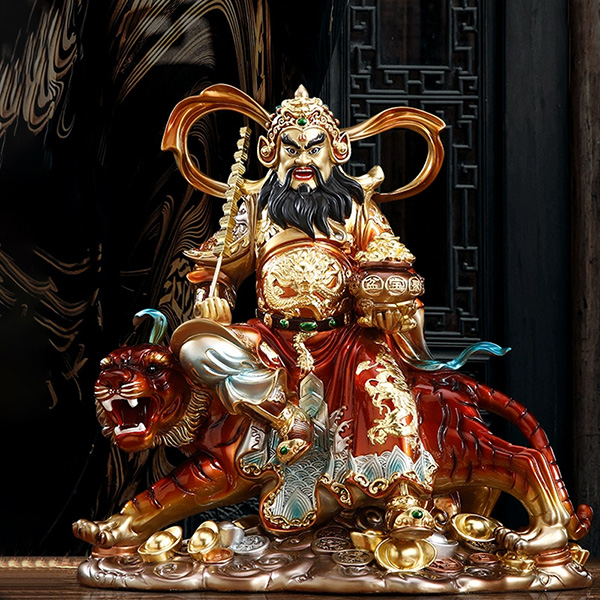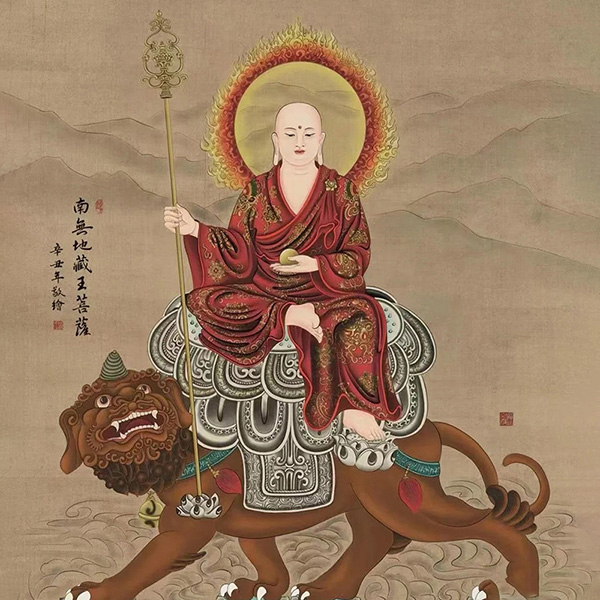Manjusri Bodhisattva, also known as Wenshu Pusa in Chinese, is one of the most prominent bodhisattvas in Buddhism. Renowned for his great wisdom, he is highly venerated by Buddhists around the world.
Manjusri is often depicted as a noble figure seated on a lotus throne, holding a sword in one hand and a sutra in the other. The sword symbolizes the cutting off of ignorance and delusion, while the sutra represents wisdom and knowledge. His appearance is serene and majestic, exuding an air of profound wisdom and tranquility.
In Buddhist scriptures, Manjusri is described as having extraordinary intellectual powers and profound understanding of the Dharma. He is said to be able to guide sentient beings on the path to enlightenment by imparting wisdom and insight. His teachings emphasize the importance of cultivating wisdom through study, reflection, and meditation.
Manjusri Bodhisattva is particularly associated with the pursuit of knowledge and intellectual growth. He is regarded as the patron saint of scholars, students, and those seeking wisdom. Many people pray to Manjusri for inspiration and guidance in their studies and intellectual endeavors.
Throughout history, Manjusri has inspired countless people to seek wisdom and truth. His presence in Buddhist art and literature serves as a reminder of the power of wisdom to transform lives and bring about spiritual liberation.
In temples and shrines dedicated to Manjusri, devotees offer prayers and make offerings in the hope of receiving his blessings and wisdom. The worship of Manjusri Bodhisattva continues to play an important role in the spiritual lives of many people, providing them with a source of inspiration and strength on their journey towards enlightenment.
In conclusion, Manjusri Bodhisattva is a symbol of wisdom and enlightenment in Buddhism. His teachings and example inspire us to pursue knowledge, cultivate wisdom, and strive for spiritual growth. Whether through prayer, meditation, or study, we can all draw on his wisdom and guidance to lead a more meaningful and fulfilling life.
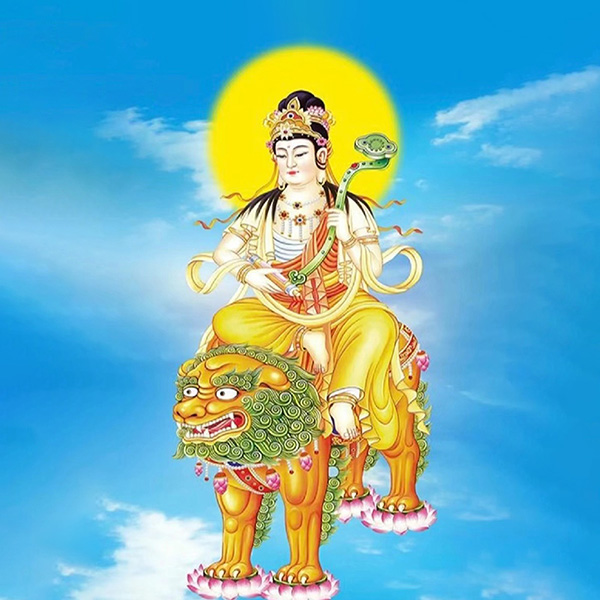
Manjusri Bodhisattva is an important figure in Chinese Buddhist beliefs. Known as the Bodhisattva of wisdom, he is associated with various aspects such as wisdom, culture, academia, art, writing, and education.
In Buddhist scriptures, Manjusri Bodhisattva is often depicted as a noble and wise figure. He holds a sword of wisdom, symbolizing his ability to cut through ignorance and delusion. With his profound wisdom, he guides sentient beings on the path of enlightenment.
Manjusri Bodhisattva is highly revered in many Buddhist temples. Devotees offer prayers and seek his blessings for intellectual growth, academic success, and spiritual awakening. His presence is believed to bring clarity of mind and inspiration.
According to some sources, Manjusri Bodhisattva is also associated with certain mountains that are considered sacred in Buddhism. For example, Mount Wutai is known as the abode of Manjusri Bodhisattva. Many pilgrims visit these places to experience a deeper connection with the divine and seek spiritual transformation.
In art and literature, Manjusri Bodhisattva is a popular subject. Paintings and sculptures often depict his serene and majestic form, inspiring awe and reverence. His image is also used in various literary works to convey themes of wisdom, compassion, and spiritual pursuit.
Moreover, Manjusri Bodhisattva’s teachings on wisdom and compassion have had a profound impact on Chinese culture and society. His values have influenced generations of scholars, artists, and thinkers, promoting a spirit of learning, reflection, and kindness.
In conclusion, Manjusri Bodhisattva holds a significant place in Chinese Buddhist beliefs and culture. His wisdom and compassion continue to inspire and guide people on their spiritual journey.
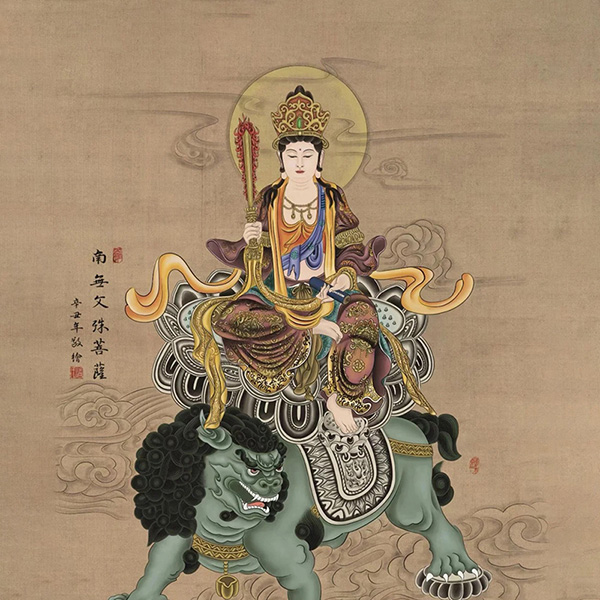
Famous Characteristics
(1) Appearance and Symbols
Manjusri Bodhisattva is often depicted sitting on a lotus seat, exuding an air of serenity and wisdom. In his hand, he holds the Wisdom Sword, which is a powerful symbol. This sword represents his ability to cut through ignorance and delusion, guiding sentient beings towards enlightenment. The Wisdom Sword is not a weapon of destruction but a tool for spiritual growth and understanding.
Manjusri Bodhisattva is also often accompanied by a blue headdress and jewels. The blue headdress is said to symbolize his profound wisdom and spiritual purity. The jewels he wears add to his majestic appearance and are believed to represent his noble status.
Another significant symbol associated with Manjusri Bodhisattva is his mount, a green lion. Riding a green lion represents the pursuit of wisdom and truth. The lion is a symbol of strength and courage, and by riding it, Manjusri Bodhisattva shows his determination to overcome obstacles on the path to wisdom.
(2) Status among Bodhisattvas
Manjusri Bodhisattva is one of the four major Bodhisattvas in Buddhism, along with Avalokitesvara Bodhisattva, Ksitigarbha Bodhisattva, and Samantabhadra Bodhisattva. Each of these Bodhisattvas has their own unique characteristics and qualities, but Manjusri Bodhisattva stands out for his wisdom.
As the Bodhisattva of wisdom, Manjusri Bodhisattva holds a special place in the hearts of believers. His wisdom is highly regarded and sought after by those on the spiritual path. In Buddhist art and literature, he is often depicted alongside the other major Bodhisattvas, forming a powerful group that represents different aspects of spiritual growth and enlightenment.
According to some sources, Manjusri Bodhisattva was once an Indian prince who chose to pursue the path of Buddhism due to his endless wisdom and determination. This background adds to his status among Bodhisattvas and makes him a source of inspiration for many.
In conclusion, Manjusri Bodhisattva’s appearance and symbols, as well as his status among Bodhisattvas, make him a truly remarkable figure in Buddhism. His wisdom and teachings continue to inspire and guide people from all walks of life on their journey towards spiritual growth and enlightenment.
Significance and Influence
(1) In Buddhism
Manjusri Bodhisattva holds profound significance in Buddhism. He represents the unwavering pursuit of wisdom and truth. As a symbol of knowledge and enlightenment, he guides practitioners on their spiritual journey. In the realm of Buddhist scriptures translation, his wisdom is instrumental. Skilled translators draw inspiration from his profound understanding to accurately convey the profound teachings of Buddhism to different languages and cultures. When it comes to the interpretation of Buddhist doctrines, Manjusri Bodhisattva’s wisdom serves as a guiding light. Scholars and practitioners alike look to his example to gain deeper insights into the complex and profound Buddhist teachings. Moreover, in the creation of Buddhist music and art, his image and qualities inspire artists to create works that are not only aesthetically pleasing but also convey spiritual messages. For instance, in some Buddhist music compositions, the theme of wisdom and enlightenment associated with Manjusri Bodhisattva is often expressed through melodious tunes and harmonious arrangements. In Buddhist art, his serene and majestic appearance on paintings and sculptures serves as a source of inspiration for artists to depict the beauty and power of wisdom.
(2) In Education and Culture
In education and culture, Manjusri Bodhisattva is regarded as the guardian of learning, wisdom, and knowledge. His influence extends to many aspects of human intellectual pursuit. In India and China, many temples and Buddhist schools hold his image in high esteem and worship it for blessings. In educational institutions, his teachings on wisdom and knowledge are often cited as an inspiration for students and scholars. For example, in some traditional Buddhist schools, students are encouraged to emulate the qualities of Manjusri Bodhisattva, such as perseverance in learning and the pursuit of truth. In the field of culture, his image and stories have been incorporated into various forms of art and literature. Paintings, sculptures, and literary works often depict his wisdom and compassion, spreading his teachings to a wider audience. His influence also extends to modern education, where values such as wisdom, compassion, and perseverance are still highly regarded and promoted.
(3) As a Protector
Manjusri Bodhisattva is considered a powerful protector in Buddhism. he is believed to have the ability to protect Buddhist believers from disasters. Many believers turn to him in times of trouble and danger, seeking his blessings and protection. For instance, during natural disasters or personal crises, people may offer prayers to Manjusri Bodhisattva, hoping for his intervention and protection. His role as a protector gives believers a sense of security and comfort, knowing that they have a powerful spiritual being watching over them. In addition to protecting believers from physical disasters, he is also believed to protect them from spiritual afflictions such as ignorance and delusion. By guiding believers towards wisdom and enlightenment, he helps them overcome the obstacles on their spiritual path.
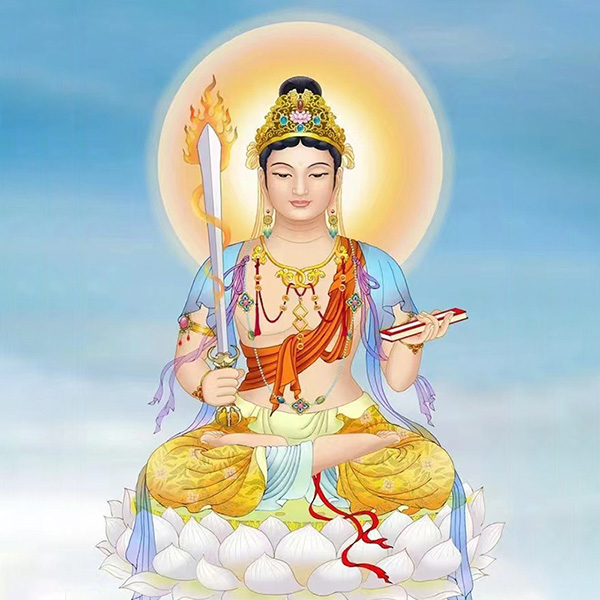
Rich Legends and Stories
The famous “Sutra of Manjusri’s Nirvana” records his spiritual journey and the mysteries of wisdom. This sutra is a profound source of inspiration for many believers and scholars. It offers insights into the path of wisdom and enlightenment that Manjusri Bodhisattva has walked.
In Chinese Buddhist traditions, Manjusri Bodhisattva is often depicted with other Bodhisattvas. For example, he is frequently seen alongside Avalokitesvara Bodhisattva and Samantabhadra Bodhisattva. This grouping represents different aspects of spiritual growth and compassion. When depicted together, these Bodhisattvas create a powerful visual and spiritual impact.
According to some legends, Manjusri Bodhisattva has appeared in different forms to guide and assist people. There are stories of him manifesting in times of great need, bringing wisdom and comfort to those who are suffering. These legends serve to strengthen the faith of believers and remind them of the ever-present presence of divine wisdom.
In art and literature, these depictions of Manjusri Bodhisattva with other Bodhisattvas have inspired countless works. Paintings often show the serene and majestic figures of these divine beings, surrounded by symbols of wisdom and compassion. Sculptures, too, capture their beauty and power, standing as a testament to the rich traditions and beliefs associated with them.
The legends and stories surrounding Manjusri Bodhisattva not only add to the beauty and mystery of Buddhism but also serve as a source of moral and spiritual guidance. They encourage people to pursue wisdom, kindness, and compassion in their lives. Through these stories, people can connect with the divine and find inspiration on their own spiritual journeys.
